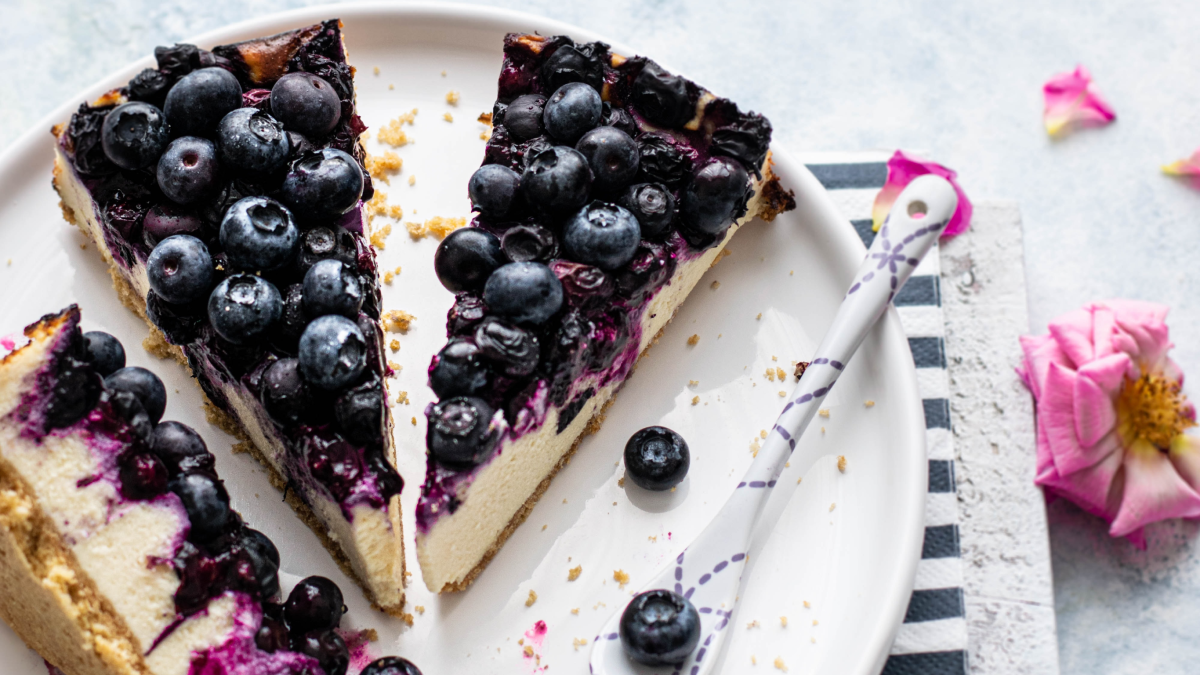
The lactose intolerance diet (a diet free of dairy or with modified amounts of dairy) is not very difficult to manage. Since approximately 75% of the world’s population has some level of lactose intolerance, it’s not surprising why there are so many high-quality dairy alternatives available today. Supply meets demand, and since lactose intolerance is so common, there are tons of great options when it comes to dairy alternatives.
Some of the dairy alternatives available in grocery stores, for example, are so delicious that people who don’t have lactose intolerance still buy them instead of the dairy option. Many people simply prefer the taste of the non-dairy options for milk, ice cream, etc.
Since lactose intolerance symptoms can be quite unpleasant, it’s important to find dairy alternatives that you enjoy eating and follow a lactose intolerance diet.
Lactose intolerance happens when your body can’t digest lactose, the main carbohydrate found in dairy. Our bodies use an enzyme called “lactase” to break down the sugars in dairy products such as milk, cheese, and yoghurts. Without having enough lactase, we can’t digest lactose properly, causing gastrointestinal distress such as stomach pains, cramps and bloating. These are only some of the many lactose intolerance symptoms to watch for.
Popular Dairy Alternatives for Your Lactose Intolerance Diet
Since ignoring your lactose intolerance isn’t an option, and OTC lactase tablets won’t always be effective, the best option is to look for alternatives to your favourite dairy products.
Here are some of the best dairy alternatives:
1. Milk
People love milk – it’s something we love to drink from the moment we’re born, and it has a huge range of uses, from topping up your coffee to making smoothies and eating cereal. Milk is rich in calcium, carbs, and protein, but it’s also high in lactose. The best alternatives for milk include:
- Lactose-free milk: Lactose-free, or non-dairy milk is becoming increasingly common these days. We’re beginning to see these products appear on shelves all around the world, and they’re usually made with soy, seeds (flax or hemp) and grain.
- Nut milks and plant-based milks: There’s no shortage of alternative plant-based milks on the market right now, including coconut milk, almond milk, cashew milk, and countless others. Experiment to find the one you like, because various nut milks, for example, have different flavors.
- Rice or Oat milk: Rice milk is low on carbs, and on lactose, it’s a great choice if you’re not a huge fan of grain milks. Oat milks are particularly good for you, because they contain up to 4 grams of protein!
2. Yogurt

As mentioned above, people with lactose intolerance often have fewer side effects when eating yoghurt, compared to consuming other dairy products. Yoghurt is a good food to have in your diet, particularly if it supports the good bacteria in your stomach.
A single cup of whole-milk yoghurt can give you up to 8 grams of fat, 11 grams of carbs, 9 grams of protein, and 149 calories of your daily recommended allowance. Although nutrition varies based on brand, you can get a similar result from alternative yoghurts, such as:
- Coconut milk yogurt: Packed full of flavour, and great for granola
- Almond milk yogurt: Low on fat and high on protein. Almond milk yogurt can even include some fibre.
- Hemp yogurt: Hemp yogurt contains up to 3.5 grams of fibre, 11 grams of protein, and even tends to have fewer calories than coconut milk yogurts.
- Soy milk yogurt: Soy milk yogurts are great for protein, with up to 6 grams of protein per cup.
3. Cheese
If you love cheese, and you don’t want to substitute it, just look for some cheeses with a much lower lactose level. Parmesan, Cheddar, and Swiss cheeses are often much lower in lactose. Alternatively, softer cheeses like cottage cheese can be a bad choice.
If you’re looking for an alternative to soft cheese, stick to the vegan section of your local supermarket. There are tons of nut, soy, and dairy-free versions of cream cheese on the market today, often made with various starch, pea protein, and vegetable oils.
Cashew cheese is especially delicious.
For hard cheese, you might have a harder time mimicking the taste and texture. Casein in hard cheese is difficult to replicate. Stick to Parmesan and mild cheddar in very low doses.
4. Butter
Butter, like yoghurt, isn’t always a problem for people with lactose intolerance. The right quality of butter will usually contain a very low amount of lactose. However, if you still want to cut this substance out of your diet already, you can switch the butter out for an alternative made with vegetable oils, coconut, and plant-based substances.
Nut and seed buttons are becoming increasingly popular in today’s landscape. Cashew, almond, and sunflower seed butter are all excellent choices. Try switching to a vegetable oil spread, if you’re not worried about protein. If you want something a little better for your body, nut butter can deliver up to 2-3 grams of protein.
5. Ice Cream

You may be able to live without milk and butter – but what about ice cream? Ice cream is one of the most popular treats in the world, and you don’t necessarily have to miss out if you’re not able to manage any dairy. You can swap your ice cream for options like:
- Non-dairy ice cream: Look for an ice cream made with cream coconut, almond, or soy milk, rather than the standard dairy options.
- Cashew ice cream is another very popular choice.
- Sorbets: Sorbets don’t have any dairy in them, making them excellent for those who might have lactose intolerance symptoms.
- Home-made desserts: You can make a dessert similar to ice cream by blending frozen bananas with other ingredients like berries and flavourings.
There are tons of recipes out there for almond milk ice cream and other dairy-free ice cream products. Try this one for a quick and simple way to get your chocolate peanut butter fix.
[h3] 6. Cream
Cream is a delicious addition to a lot of desserts and recipes, but it’s a nightmare for people with lactose intolerance. It is the top layer of fat that gathers on fresh milk. Depending on the kind of cream you want, it can be very high in fat, so you can definitely live without it if you’re improving your diet.
Of course, if your favourite recipe calls for a dollop of cream, then you might be able to find a handful of options in your local grocery store. Coconut milk creams are growing increasingly common, and there are also varieties made with cashews, soy, and other nuts.
Some dairy-free alternatives do contain higher amounts of high-fructose corn syrup, trans fats, and other unwanted ingredients, unfortunately. Make sure you check the label.
7. Sour Cream
A little different to standard cream, sour cream comes from fermenting milk with bacteria, rather than just separating layers of milk. It’s used as a base for dips, an ingredient in various baked goods, and as a topping for all kinds of meals.
Similar to many creams and milk alternatives, most of the options for non-dairy sour creams are soy-based, but there are options available with beans and vegetable oils too. It’s important to be cautious when looking for sour cream alternatives, as some are high in fat.
If you’re feeling creative, try making this non-dairy sour cream recipe at home.
8. Mayonnaise
Another common ingredient for a wide range of salads, dressings, and other foods, Mayo, unfortunately, contains a small amount of lactose in most cases. With that in mind, you might want to consider switching to vegan mayo if you’re lactose intolerant.
You can also try making your own mayo using ingredients like nutritional yeast, cashews, silken tofu, and Dijon mustard. There are quite a few different recipes out there if you’re willing to get creative, including those using apple cider vinegar.
9. Chocolate

If you have a sweet tooth you just can’t ignore – you might be a fan of milk chocolate. As you might expect from the title, milk chocolate is packed full of dairy, as well as other things which aren’t always ideal for your diet. Similarly, you’ll find that a lot of chocolate-flavoured treats featuring white and milk chocolate are off the menu too.
One option to replace your standard milk chocolate experience is to look into vegan chocolate. There are some delicious options out there, in a range of flavours. Another option is to develop a taste for dark chocolate. Dark chocolate generally contains no dairy (or a lot less than milk chocolate).
Aside from being good for your dairy intolerance, dark chocolate also has the added benefit of being rich in antioxidants.
10. Whey and Whey Protein Alternatives
If you’re hoping to turbocharge your workout, whey protein might be one of the first products you consider buying. Whey protein is excellent for supporting muscle recovery and boosting exercise outcomes. Unfortunately, it’s also made with whey from dairy products – which means it’s no good for lactose intolerance.
An alternative could be to switch to pea protein – a naturally occurring protein found in peas with a large range of amino acids. You can also try things like hemp and soy protein instead. Experiment with different options to find out how they influence your routine.
Living With Lactose Intolerance
Now that you’ve read how many amazing dairy-free alternatives there are, you probably don’t feel like you’ll be left wanting when you stick to a lactose intolerance diet. Avoiding dairy is made easy with all of these great dairy-free choices, many of which taste better than the dairy option, anyway.
Lactose intolerance is one of the most common forms of food intolerance in the world, and giving up dairy shouldn’t feel like a major inconvenience. Many people who have less severe lactose intolerance symptoms find that they can get by just by reducing dairy in their diet, and they don’t have to fully cut it out.
Once you start tasting different high-quality and tasty dairy-free products, you might find that the lactose intolerance diet is very easy.
To find out what your food sensitivities are, take a Circle SnapShot Food Sensitivity Test now and know what foods are actually causing you sick.
To further understand your health, find out what your unique body works with CircleDNA today. Discover whether you might be suffering from undiagnosed lactose intolerance or other food sensitivities. This way, your quality of life will be better when you modify your diet to manage your food intolerances. When you feel better, you live better.

This Post Has 4 Comments
Comments are closed.